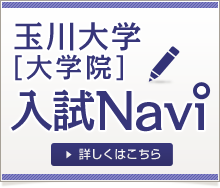ビーバーフォード先生Using AI to Enhance My Teaching Practices: Experiences with Documind in the Classroom
2024.08.20
AIを活用して教育実践を向上させる:Documindを教室で使用した体験
With the semester over, it is time to revise my course materials for next year. Last semester, I intentionally integrated AI tools into my teaching to demonstrate their potential to my students. Despite being much younger than me, only a few students had explored major large language models. As educators, we must stay abreast of, or even ahead of, our students' understanding of these tools. If we do not understand these tools, we can not guide our students in developing ethical practices for their use.
学期が終了したので、来年度の授業資料を改訂する時期がやってきました。前学期、私はAIツールを意図的に授業に取り入れ、その可能性を学生に示しました。学生たちは私よりも若いですが、大規模な言語モデルを探求したことがある者は少数でした。教育者として、私たちはこれらのツールについて学生よりも理解を深めるか、少なくとも同等の知識を持つべきです。これらのツールを理解しなければ、学生に対して倫理的な使用方法を教えることができません。
This year, the tools I used included Documind, Chat GPT, and Scholar GPT. In this post, I will share my experiences with Documind, a model that trains only on the documents you provide. It only looks at the documentation for the answer to the question. If you ask, ‘How much does an elephant weigh?’ it will tell you that information is not in the documentation. Since it only uses the documents you provided, the chances of ‘hallucinations’ are much smaller than with the models that train on the entirety of human knowledge.
今年、私が使用したツールには、Documind、Chat GPT、Scholar GPTが含まれます。今回は、提供された文書のみを学習するDocumindというモデルについての体験を共有します。このツールは、質問に対する答えを文書内から探し出します。「象の体重はどれくらいですか?」と尋ねても、その情報が文書内にない場合、そのことを教えてくれます。提供された文書のみを使用するため、「幻覚」(事実ではない情報を生成すること)の可能性は、全人類の知識に基づくモデルと比べて非常に少ないです。
I uploaded over 700 PDF files into the system, including course readings, video transcripts, text from slide decks, articles from open-source journals, and all my course notes. While most of the documents were in English, I included some in Japanese, French and Spanish. I uploaded parts of the Japanese National Curriculum that I had never been able to read before, which was particularly enlightening for me and some of the English-speaking students who teach in Japanese national schools.
私はシステムに700以上のPDFファイルをアップロードしました。これには、授業の読み物、ビデオの書き起こし、スライドデッキのテキスト、オープンソースのジャーナル記事、そしてすべての授業ノートが含まれています。大部分の文書は英語でしたが、一部は日本語、フランス語、スペイン語でも提供しました。特に、日本の国定教科書の一部をアップロードしましたが、これは私が以前に読んだことがなかったもので、私自身や日本の国立学校で教えている英語話者の学生にとっても非常に有益でした。
The system allows you to create an entrance portal where students can ask questions. I encouraged them to use it for their reflections and other assignments, letting them know that they had to attribute the sources they used. Documind includes links to the documents it used for the responses, basically citing their work for them. I also had them include the prompts they used in their reference list.
システムでは、学生が質問できるエントランスポータルを作成できます。私は彼らに反省やその他の課題のためにこれを使うように奨励し、使用したソースを明記する必要があることを伝えました。Documindは回答に使用した文書へのリンクを提供してくれるので、基本的に彼らの引用を代わりに行ってくれます。また、私は彼らに参照リストに使用したプロンプトも含めるよう求めました。
During classes, when I was asked tricky questions ( my memory is not what it used to be), I would put Documind up on the screen and query the documentation in class in front of the students, emphasizing that the quality of the question affected the quality of the answer, ensuring they understood that the inclusion of specific keywords or author’s names made a considerable difference in the responses. Every once in a while, some of these queries proved me wrong, which some people would probably feel uncomfortable with, but I firmly believe that fostering a classroom environment where mistakes are viewed as learning opportunities begins with the teacher. Where the system bettered me was usually in a question involving exact numbers, timelines or dates. Luckily, it never proved that I was totally off base.
授業中、難しい質問をされたとき(記憶力が以前ほど良くないので)、Documindをスクリーンに映し、文書をクラスの前でクエリして見せました。質問の質が回答の質に影響することを強調し、特定のキーワードや著者の名前を含めることが回答に大きな違いを生むことを理解させました。時々、これらのクエリが私の間違いを指摘することがありましたが、多くの人が不快に感じるかもしれませんが、私は間違いを学びの機会として捉える教室環境を育むことが、教師から始まると強く信じています。システムが私より優れているのは、通常、正確な数値、タイムライン、または日付に関する質問の場合です。幸いにも、完全に間違っていることが証明されたことはありませんでした。
My classes are quite diverse, with students having varying proficiency in English. Documind allowed students to query the documentation in any language they wanted to, and it also gave its responses in multiple languages. When responding to student reflections in the online forums we use for asynchronous discussions, I asked the documentation to provide clarification and respond in English, Japanese, French, Mandarin and Vietnamese. We have been able to translate using tools like DeepL and Google Translate for years, but unlike these machine translations, done word for word, Documind and the other ChatBots do not translate; they write in these languages. Generally, with major languages, the responses written in other languages are as good as responses written in English. The students reported that the multilingual output was usually very accurate.
私のクラスは非常に多様で、英語の習熟度も異なります。Documindを使用することで、学生は任意の言語で文書をクエリし、複数の言語で回答を受け取ることができました。非同期の議論のために使用するオンラインフォーラムで学生の反省に応じる際、私は文書に対して説明を求め、英語、日本語、フランス語、中国語、ベトナム語で回答してもらいました。これまでのツールであるDeepLやGoogle翻訳で数年間翻訳を行うことができましたが、これらの機械翻訳は単語単位で行われるのに対し、Documindや他のChatBotsは翻訳ではなく、その言語で文章を作成します。一般的に、主要な言語での回答は英語で書かれた回答と同じくらい良好でした。学生たちは、多言語の出力が非常に正確であると報告しました。
For those students with weaker English, the system allowed them to re-write whole documents in their strongest language. Accessing the materials in their strongest language represents a considerable time saving for students who could read the document in English in a pinch, but it would have taken them hours to do so.
英語が弱い学生にとって、このシステムは彼らの最も得意な言語で文書全体を再書き換えることができました。彼らの最も得意な言語で資料にアクセスすることは、英語で文書を読むことはできても、数時間かかるところを大幅に短縮しました。
Another great feature of these LLMs is that they can now create tables, a great way to demonstrate similarities and differences between documents and viewpoints. The system pulled things for documents that I did not know contained that type of information. So, while the tabular format made things easier for students, I also learned a lot. What would have taken hours to put together now only takes minutes. If you are in doubt about something in the response. In that case, you click on the links to the pdf files used for the response, and you are taken right to the document with the relevant information highlighted so you can decide if it has interpreted the information correctly.
これらのLLMs(大規模言語モデル)のもう一つの素晴らしい機能は、テーブルを作成できることです。これは、文書や視点の類似点と相違点を示すのに非常に有効です。システムは、私がそのような情報を含んでいるとは知らなかった文書から情報を引き出しました。そのため、表形式で情報を提供することで学生にとっては簡単になりましたが、私自身も多くのことを学びました。何時間もかかる作業が今では数分で済むようになりました。もし回答に疑問がある場合は、その回答に使用されたPDFファイルのリンクをクリックすると、該当する文書に飛び、関連情報がハイライトされるので、情報が正確に解釈されているかどうかを自分で確認できます。
I am focusing on two things in revising my course materials for next year. The first is to provide students with additional readings based on queries of the course documentation using Documind. Not all of my students come from similar teaching training programmes, so they have varying understandings of some topics. With this system, I can quickly summarize a topic or concept in multiple languages and give them a link to a document if they want to know more.
来年度の授業資料の改訂において、私は二つのことに焦点を当てています。一つ目は、Documindを使用してコース文書をクエリし、追加の読み物を学生に提供することです。すべての学生が同様の教育訓練プログラムを受けているわけではないので、一部のトピックに関する理解が異なります。このシステムを使用することで、トピックや概念を素早く要約し、さらに知りたい場合は文書へのリンクを提供できます。
I am also uploading my course materials into Scholar GPT to see if any information needs updating. Quite often, when I ask this question, it will link me to the latest works of the authors I have in the reference lists. Looking them all up the old-fashioned way would have taken me hours and hours. I do not agree with all of the suggestions and recommendations given, but the majority were spot-on. When I ask Scholar GPT to evaluate my materials, I include the learning intentions that I meant to cover, and it does a good job of telling me whether or not I have addressed those intentions and suggestions for changes I could make to refine the materials.
もう一つは、Scholar GPTにコース資料をアップロードして、情報が更新されているかどうかを確認することです。この質問をすると、リファレンスリストにある著者の最新の作品にリンクしてくれます。従来の方法でこれをすべて調べるには何時間もかかりますが、このシステムを使うことで、すぐに必要な情報を見つけることができます。すべての提案や推奨に同意するわけではありませんが、大多数は的確です。Scholar GPTに資料を評価させる際には、カバーしようとしている学習意図を含めますが、それが達成されているかどうか、また資料の改良に関する提案を良くしてくれます。
This semester went well, and the analytics show that students used these new tools effectively. Generally, the quality of the work that students submitted was, on average, better than previously. Having Documind up and running meant they chatted directly with the documentation when they had questions. They could access materials in their strongest language, and, as mentioned above, they had instant access to over 700 documents which they could never have read in 15 weeks. Another impressive thing was that none of the students used these tools to cheat. If they used an AI tool, they cited the source and gave the prompt.
今学期はうまくいき、分析結果によると、学生たちはこれらの新しいツールを効果的に使用していました。提出された作品の質は、以前よりも平均的に向上していました。Documindを稼働させることで、学生たちは質問があるときに文書と直接やり取りすることができました。最も得意な言語で資料にアクセスでき、上記のように、15週間で読むことができなかった700以上の文書に瞬時にアクセスできました。また、驚くべきことに、これらのツールを使用して不正を行った学生は一人もいませんでした。もしAIツールを使用した場合、彼らはソースを引用し、プロンプトを提供しました。
Next year, I want to encourage students to use these systems to get feedback on their work based on the assessment criteria attached to the assignments. Chat GPT allows you to share a link to individual conversations, and I plan to ask students to provide me the link to their discussions related to assignments. Reviewing these conversations, I hope to gain insight into how they use these tools for academic purposes. Before posting, I asked Chat GPT to evaluate this post. The suggestions it gave were helpful. Here is the link to that conversation.
来年度、私は学生たちにこれらのシステムを利用して、課題の評価基準に基づいたフィードバックを受け取ることを奨励したいと思います。Chat GPTでは、個々の会話にリンクを共有できるので、私は学生たちに、課題に関連する議論のリンクを提供するよう求める予定です。これらの会話をレビューすることで、彼らがこれらのツールを学術的な目的でどのように使用しているかを把握することができることを期待しています。投稿する前に、Chat GPTにこの投稿を評価させました。その提案は有益でした。その会話はこちらでご覧ください。









